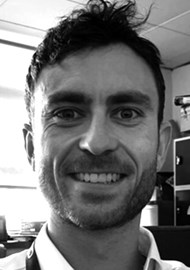A collaboration between the German Committee for the Prevention of Blindness (DKVB), Rukwa regional government in Tanzania and the University of St Andrews Global Health Team successfully delivered a hybrid teaching programme for ophthalmic nurses in Sumbawanga, south west Tanzania, despite the COVID-19 pandemic.
The coronavirus pandemic has led to severe disruption of eye healthcare delivery and training worldwide [1]. Many global health collaborations have been put on hold this year due to coronavirus related restrictions [2]. However, people continue to suffer preventable blindness across the world. Restricted efforts to train eye healthcare workers and deliver eyecare is exacerbating this situation further [3].
The focus of healthcare education is now increasingly shifting towards identifying ways of reducing direct person-to-person contact, through modalities such as virtual teaching and simulation [1]. This trend may well continue beyond the pandemic, as these new ways of educating healthcare staff are not just cost-effective but expands the reach of education to underserved regions.
To reduce close person-to-person contact during clinical teaching, the University of St Andrews School of Medicine has collaborated with Arclight Medical Ltd (www.arclightscope.com) to deliver safe clinical teaching, despite the COVID-19 pandemic. The Arclight is a low-cost solar powered ophthalmoscope and otoscope, which has been shown to be at least as effective and easier to use than traditional ophthalmoscopes [4]. Clipped to the camera of a smartphone it can allow screen sharing with larger monitors for instant distanced demonstration of clinical features to groups of students.

Figure 1: COVID-19 secure clinical teaching using the Arclight:
attached to the camera of a mobile phone demonstrating both ophthalmoscope
and otoscope findings (a, b), as well as examination practice with simulation eyes (c, d).
The University of St Andrews global health team has supported the development of low-cost simulation eyes, which can illustrate a range of pathologies for anterior segment, fundus reflection (red reflex) and retinal examination. These simulation tools have recently been shown to be more realistic and preferred by learners over traditional, more expensive devices [5]. Using the easily disinfected Arclight device in combination with the low-cost simulation eyes reduces close personal contact during teaching while continuing quality clinical education with distancing measures in place. Below, we outline our recent delivery of eyecare training in Sumbawanga, Tanzania using experiences gained from the University of St Andrews School of Medicine teaching during the COVID-19 era.
Preventing avoidable blindness project in Sumbawanga, Tanzania
Sumbawanga is the capital of the isolated Rukwa region in the south west of Tanzania. Currently there is one ophthalmologist covering an area with 1.5 million people.
In 2017, the German Committee for the Prevention of Blindness (DKVB, www.dkvb.org) started collaborating with local colleagues on a ‘prevention of avoidable blindness programme’ in the region. A 10-year plan to provide comprehensive eye healthcare in south west Tanzania was developed with the pilot for this being in Rukwa region. To ensure the project becomes increasingly sustainable and self-sufficient, the focus is on establishing local eye health services through engagement and training of local health workers and importantly the regional government. This has been achieved through regular ‘eye camps’. The principle of these eye camps has been to support local healthcare workers to screen and refer patients, provide surgical training to aspiring Tanzanian cataract surgeons and develop organisational processes in collaboration with local stakeholders.
In October 2020, the long-term strategy culminated in the opening of a dedicated eye clinic at the Atiman Memorial Hospital, Sumbawanga, as a collaborative effort between the German Committee for the Prevention of Blindness, the local government in Rukwa Region and the regional diocese. To date, three optometrists and three cataract surgeons have been trained. Twenty-four ophthalmic nurses are currently at various stages in training to support this initiative. They work in pairs at primary care units but are limited in their work by lack of access to both diagnostic equipment and training tools.

To complement the project, we developed a tailored teaching programme covering eye examination skills, history taking and clinical knowledge. Clinical teaching was based around the Arclight and simulation teaching tools. The teaching design was consistent with the recently published International Agency for the Prevention of Blindness (IAPB) and World Health Organization (WHO) Core Competencies for Health Care Workers in Africa [6] and built on previous delivery of University of St Andrews training in Rwanda [7]. Every health worker on successful completion of the training programme received an Arclight, simulation eyes and visual acuity charts to ensure they have the tools needed to continue their practice and maintain their skills long-term.
The original plan was to teach face-to-face tutorials in April 2020. Unfortunately, this had to be cancelled due to the coronavirus pandemic. Finally, in October 2020, after a series of negative COVID-19 tests, a small team from Germany made it to Sumbawanga. The programme was then divided into two parts. Ophthalmic history taking, clinical anatomy and clinical case discussions were felt to be suitable for synchronous virtual delivery. Practical sessions on visual acuity measurement, fundal reflections assessments, anterior segment and pupil examination were delivered by the team on the ground based on the Arclight training programme. Three rooms were set up, one with a projector and laptop for virtual teaching and two for clinical examinations. Twenty attending ophthalmic nurses were divided into three groups and continuously rotated through different teaching stations over the course of two days.

Figure 2: Virtual teaching session (a, d) with the invaluable help of
Frida Brick-Wandi (b) and project manager Ryner Linuma (c).

Figure 3: Preparation of the Arclight simulation eyes (a),
simulation skills practice (b, c), and small group tutorials (d).
To evaluate the effectiveness of training, a pre and post training feedback tool using recognised methods of assessment was developed [7]. Visual analogue scales from 0-100 were used to assess confidence in different clinical domains and 10 clinical cases were used as a knowledge quiz. Pre and post scores and confidence were analysed using a paired t-test on Stata (StataCorp. 2019, Release 16, TX: StataCorp LLC).
Results and reflections
Despite impressive pre-course confidence and knowledge levels of participants, scores in all domains, as well as the quiz improved for all participants (only visual acuity assessment improvement did not meet statistical significance). Improvements were seen in all domains regardless of whether the relevant information was predominantly delivered virtually or face-to-face, indicating that careful selection of modality for different topics allows for successful hybrid teaching delivery. We found that for the virtual teaching to be successful it was crucial to have someone on site with knowledge of the local language but not necessarily the topics to be taught.

Figure 4: Average participant confidence scores in clinical domains
(out of 100) and clinical case quiz (out of 10) pre and post training.
Feedback from participants was positive for both virtual and face-to-face elements of the training programme. All objectives were felt to have been met and were deemed highly relevant to their day-to-day practice. For most participants this was the first experience of virtual teaching and after some initial hesitation, engagement and interaction continued to improve with every session. It was both exciting and rewarding to see how rapidly participants adapted to the virtual teaching environment and participants expressed excitement about feeling part of a global more connected eyecare community. They were confident that they would continue to use and improve what they had learned in the course as they now individually owned the Arclight diagnostic and training tools that had been used to teach them.
Participants expressed a wish for regular refresher courses and felt both virtual and face-to-face would be valuable. In future, teaching programmes will include a ‘warm up’ session to familiarise participants who are less familiar with virtual teaching environments. We believe this will improve early participation and allow all participants to fully engage from the start. A microphone which can be easily passed between delegates to allow for easier group interaction may also improve the engagement of the whole class. A limiting factor for virtual teaching highlighted by participants was the variable access to internet connection at rural work locations, as well as the lack of access to devices to access teaching material.
Following the course, the opening of the eye clinic at the Atiman Memorial Hospital was celebrated with all participants and local dignitaries present. Course ertificates were delivered to the ophthalmic nurses.

Figure 5: Grand opening of the new eye clinic at the Atiman Memorial Hospital
in Sumbawanga with all participants and training team members present.
Next steps
The long-term aim is to integrate this teaching programme into the current local eyecare training and ensure a standardised level of expertise on which participants can then build as they develop their professional skills going forward. Further objectives include developing a ‘teaching the teacher’ initiative in which local eyecare workers become part of the training faculty in order to scale the distribution of standardised knowledge and expertise in the region.
The programme will now be expanded to train eye healthcare staff in the neighbouring Katavi region in 2021. A future aspiration of the programme is to overcome barriers in accessing virtual teaching courses by providing offline material that is pre-loaded onto low-cost tablets and updated periodically when internet access is available. The team is working with World Medical Education (https://worldmedicaleducation.org/case-study/ophthalmology/) and Litello (www.litello.com) to bring this to fruition in the form of an interactive e-book.
Conclusion
Eye health teaching during a pandemic is challenging and forces us to think and work outside of our usual patterns. We can use this opportunity to identify solutions and set up infrastructure to promote collaboration and broaden the reach of training. Even though resources may be limited, we can build resilient teaching systems for the future, which can potentially be more effective than before, yet cost less. Through this, we can foster a greater sense of a global health community. It enables inclusion of remote and previously unconnected healthcare teams where the burden of blindness is greatest and the educational needs most imperative.
References
1. Ferrara M, Romano V, Steele DH, et al. Reshaping ophthalmology training after COVID-19 pandemic. Eye 2020;34:2089-97.
2. Vision 2020 LINKS: 6.6.2020 - A celebration of international partnerships. Eye News 2020;27(3):30-4.
www.eyenews.uk.com/features/
humanitarian/post/662020-a-celebration
-of-international-partnerships
3. Flaxman SR, Bourne RRA, Resnikoff S, et al. Global causes of blindness and distance vision impairment 1990–2020: a systematic review and meta-analysis. Lancet Glob Health 2017;5(12):e1221-e1234.
4. Lowe J, Cleland CR, Mgaya E, et al. The Arclight Ophthalmoscope: A Reliable Low-Cost Alternative to the Standard Direct Ophthalmoscope. J Ophthalmol 2015;2015:743263.
5. Hetherington MJ, Kousha O, Ali AAM, et al. Comment on: Reshaping ophthalmology training after COVID-19 pandemic. Eye (Lond) August 2020;Epub ahead of print.
6. IAPB & WHO. Core Competencies for Eye Health Workforce in the WHO African region, 2019:
www.iapb.org/wp-content
/uploads/Core-Competencies-for-Eye
-HWF-in-WHO-AFRO-Region.pdf
7. O’Carroll V, Sagahutu JB, Ndayambaje D, et al. Evaluation of a pilot interprofessional ArclightTM workshop for healthcare students in Rwanda: promoting collaborative practice in eye health. July 2020;Epub ahead of print.
The Team
German Committee for the Prevention of Blindness (DKVB):
Dr Karsten Paust (Project Director & Ophthalmology Consultant, Bonn, Germany), Charlotte Ellendorff (Project Financial Management)
Rukwa Regional Team:
Ryner Linuma (Project Manager), Eric Msigomba (Cataract Surgeon, Ilembula Lutheran Hospital, Tanzania), John Bosco Munampala (Cataract Surgeon and Course Coordinator at School of Ophthalmic Assistants, Mvumi Hospital, Tanzania)
Training team members (Germany):
Beate Müller (Ophthalmologist, Köln), Victoria Bark (Ophthalmology Registrar, Düsseldorf), Inka Bukowski (Orthoptist, Giessen), Frida Brick-Wandi (Nurse and Midwife), Martin Kotula (Ophthalmology Registrar, Münster), Hanna Amamou (Specialist Eye Nurse, Bonn)
Global Health Team, University of St Andrews:
Dr Martin Anderson (Ophthalmology Registrar), Dr Andrew Blaikie (Global Health Lecturer and Ophthalmology Consultant, NHS Fife)
TAKE HOME MESSAGE
-
The Coronavirus pandemic is posing significant challenges to global health collaborations and efforts to prevent avoidable blindness through effective training.
-
Within this challenge lies an opportunity to start developing the infrastructure and experience necessary to utilise virtual collaborations and training to make training more resilient, as well as more accessible.
-
A multinational team from Tanzania, Germany and Scotland has successfully trialled a hybrid virtual / face-to-face eyecare teaching programme in south-west Tanzania for the first time.
-
Community eye health workers naïve to virtual teaching rapidly adapt to and benefit from virtual teaching sessions.
-
The low-cost Arclight ophthalmoscope and simulation tools are invaluable in eyecare training in high- and low-income settings.
FURTHER READING
-
IAPB & WHO Core Competencies for the eye health workforce in the WHO Africa region:
www.iapb.org/wp-content/uploads/
Core-Competencies-for-Eye-HWF
-in-WHO-AFRO-Region.pdf -
WHO Primary Eye Care Training Manual:
www.afro.who.int/sites/default/files/
2018-06/WEB-2835-OMS-Afro-PrimaryEyeCaretrainingmanual
-20180406.pdf -
Foster A, Morjaria P. Examining the eye. Comm Eye Health 2019;32(107):41-3.
https://cehjournal.org/wp-content
/uploads/CEHJ107.pdf
Acknowledgements: We would like to thank all team members and participants for making this project a success through their positive attitudes and hard work.
COMMENTS ARE WELCOME










